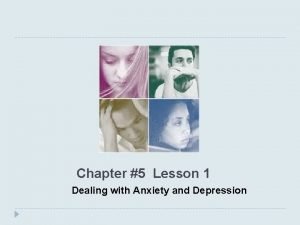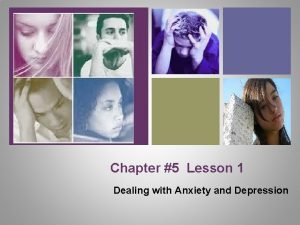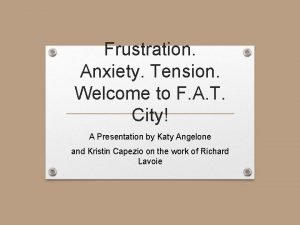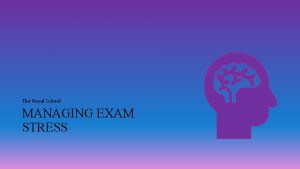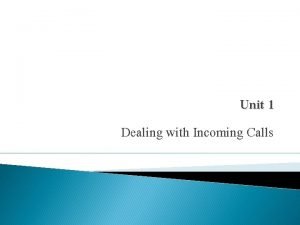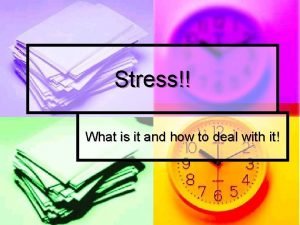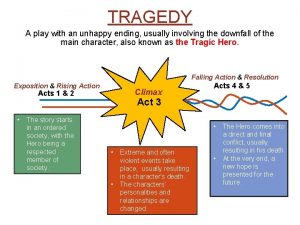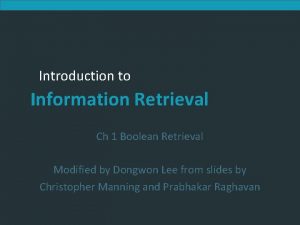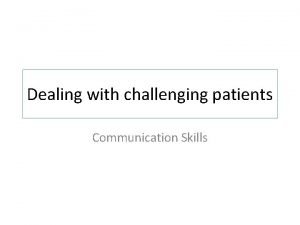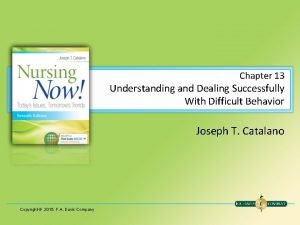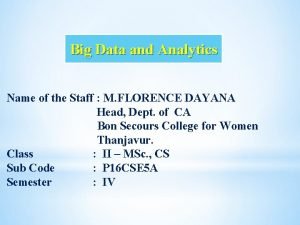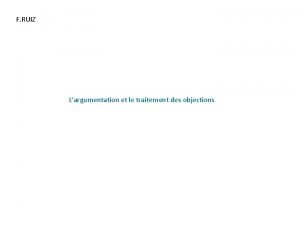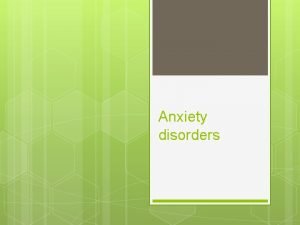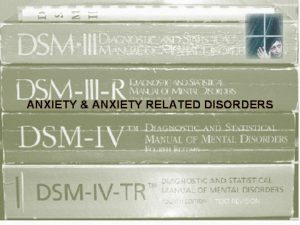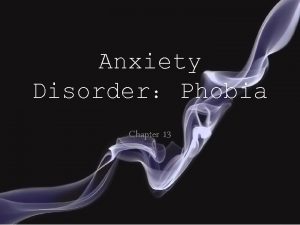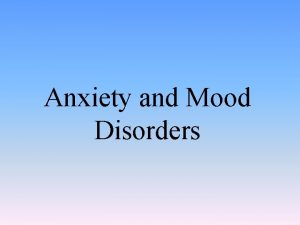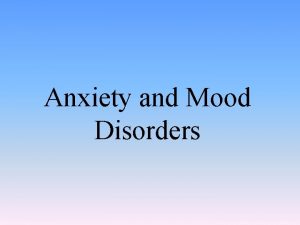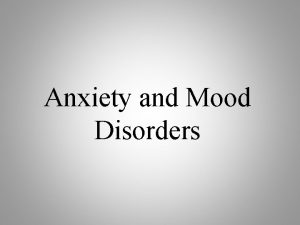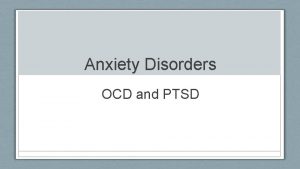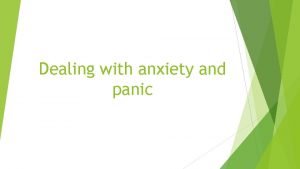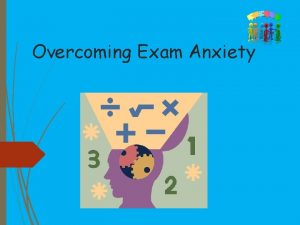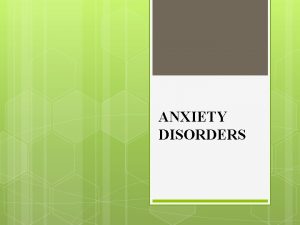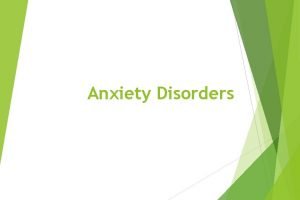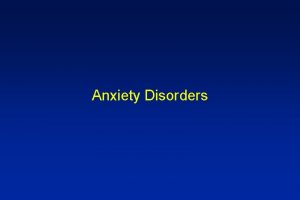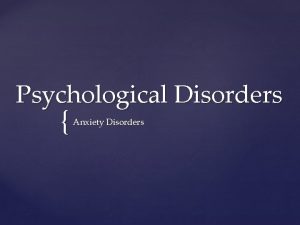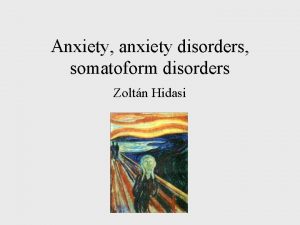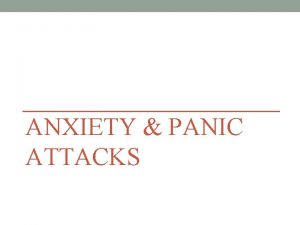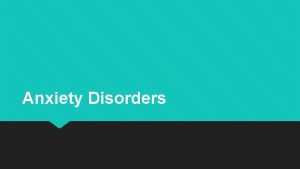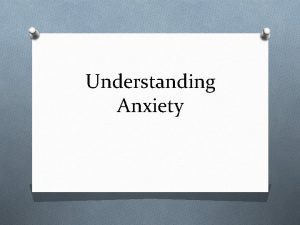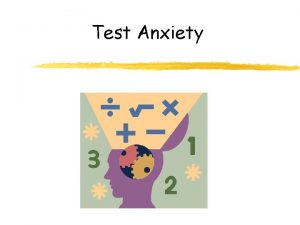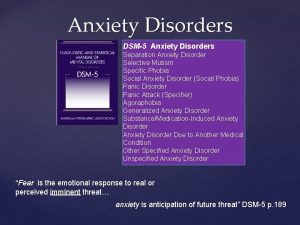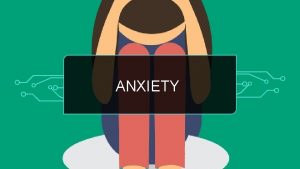Chapter 5 Lesson 1 Dealing with Anxiety and


































- Slides: 34

+ Chapter #5 Lesson 1 Dealing with Anxiety and Depression

+ Understanding Anxiety n Anxiety: the condition of feeling uneasy or worried about what may happen. n Brief feelings of anxiety are common and natural responses to stress. n Usually, once the stressful situation is over, so is the anxiety it created.

+ More Than Sad : Teen Depression

+ Understanding Depression: is a prolonged feeling of helplessness, hopelessness, and sadness. 15 -20 % teens are diagnosed with depression – 2 x as high in Girls than in Boys Apathy: lack of strong feeling, interest, or concern.

+ More Than Sad : Teen Depression


+ More Than Sad : Teen Depression

+ Causes and Effects of Depression

+ More Than Sad : Teen Depression

+ Getting Help for Depression If you recognize signs of depression in yourself or a friend, discuss your concerns with a trusted adult. Depression is a treatable illness!!! Health professionals can develop a depression-treatment plan that may include:

+ More Than Sad : Teen Depression

+ Chapter #5 Lesson 2 Mental Disorders

+ Understanding Mental Disorders n Mental Disorder: an illness of the mind that can affect the thoughts, feelings, and behaviors of a person, preventing them from leading a happy, healthful, and productive life. n Stigma: a mark of shame or disapproval that results in an individual being shunned or rejected by others.

+ Anxiety Disorders Anxiety Disorder: A condition in which real or imagined fears are difficult to control

+ Phobia: A strong, irrational fear of something specific, such as heights or social situations.

+ Cotton Ball Phobia!!!!

+ Obsessive Compulsive Disorder Persistent thoughts, fears, or urges (obsessions) leading to uncontrollable repetitive behaviors (compulsions). For example, the fear of germs leads to constant hand washing.

+ Post Traumatic Stress Disorder A condition that may develop after exposure to a terrifying event. Symptoms include flashbacks, nightmares, emotional numbness, guilt, sleeplessness, and problems concentrating.

+ Impulse Control Disorders People with impulse control disorders cannot resist the urge to hurt themselves or others.

+ Misc. Mental Disorders Eating disorders like anorexia nervosa, bulimia nervosa, or binge eating commonly occur during the teen years. Eating disorders can lead to unhealthful weight loss and death. n A person with a mood disorder experiences extreme moods that are more severe than the normal highs and lows everyone experiences. Conduct Disorder : Patterns of behavior in which the rights of others or basic social rules are violated n n Examples of conduct disorder include stealing, cruelty, lying, aggression, violence, truancy, arson, and vandalism. Teens with personality disorders are unable to regulate their emotions. They may feel distressed in social situations or may behave in ways that are distressing to others.

Bipolar Disorder + Bipolar Disorder or manic-depressive disorder is marked by extreme mood changes , energy levels , and behavior.

Schizophrenia : + Schizophrenia is a mental disorder in which a person loses contact with reality. Symptoms include unpredictable behavior, delusions, hallucinations, and thought disorders.

+ Chapter #5 Lesson 3 Suicide Prevention

+ Knowing the Facts of Suicide n Alienation : feeling isolated and separated from everyone else. n Suicide: the act of intentionally taking one’s own life n 3 rd leading cause of death 1519 year olds n 90% suffering from depression, mental disorder, substance abuse. n Cluster Suicide: a series of suicides occurring with a short period of time and involving several people in the same school or community. n 5% of all teen suicides

+ Strategies to Prevent Suicide Warning Signs of Suicide Direct statements such as “I wish I were dead. ” Indirect statements such as “I can’t take it anymore. ” Writing poems, song lyrics, or diary entries that deal with death Direct or indirect suicide threats An unusual obsession with death

+ Strategies to Prevent Suicide Warning Signs of Suicide Withdrawal from friends Dramatic changes in personality, hygiene, or appearance Impulsive, irrational, or unusual behavior A sense of guilt, shame, or rejection; negative self-evaluation Deterioration in schoolwork or recreational performance Giving away personal belongings

+ Strategies to Prevent Suicide Warning Signs of Suicide Substance abuse Complaints about physical symptoms, such as stomachaches, headaches, and fatigue Persistent boredom and indifference Violent actions, rebellious behavior, or running away Intolerance for praise or rewards

+ Depression / Teen Suicide

+ How Can You Help!! Show that you care and are concerned. Help them seek professional help. Take any and all talk seriously. Show empathy. Stress temporary nature of that problems or feelings. Make clear that you know they want to end their pain- but suicide is not the answer. Ask if they have a specific plan and means to follow through with it. Suggest they talk to a trusted adult. DO NOT AGREE TO “KEEP A SECRET. * Boy walking down the hallway and spills his books story.

+ Chapter #5 Lesson 4 Getting Help

+ When Help is Needed Feeling trapped or worrying all the time Feelings that affect sleep, eating habits, schoolwork, job performance, or relationships Becoming involved with alcohol or other drugs Becoming increasingly aggressive, violent, or reckless

+ Mental Health Professionals Counselor A professional who handles personal and educational matters School Psychologist A professional who specializes in the assessment of learning, emotional, and behavioral problems of schoolchildren Psychiatrist A physician who diagnoses and treats mental disorders and can prescribe medications

+ Mental Health Professionals Neurologist A physician who specializes in physical disorders of the brain and nervous system Clinical Psychologist A professional who diagnoses and treats emotional and behavioral disorders with counseling. Some can prescribe medications Psychiatric Social Worker A professional who provides guidance and treatment for emotional problems in a hospital, mental health clinic, or family service agency

Treatment Methods + n Psychotherapy: An ongoing dialogue between a patient and a mental health professional n Behavior Therapy : A treatment process that focuses on changing unwanted behaviors through rewards and reinforcements n Cognitive Therapy : A treatment method designed to identify and correct distorted thinking patterns that can lead to feelings and behaviors that may be troublesome, self-defeating, or selfdestructive n Family Therapy : Treatment that focuses on helping the family function in more positive and constructive ways by exploring patterns in communication and providing support and education n Group Therapy : Treating a group of people who have similar problems and who meet regularly with a trained counselor. n Drug Therapy : : The use of certain medications to treat or reduce symptoms of a mental disorder.
 Chapter 5 lesson 1 dealing with anxiety and depression
Chapter 5 lesson 1 dealing with anxiety and depression Chapter 5 lesson 1 dealing with anxiety and depression
Chapter 5 lesson 1 dealing with anxiety and depression Chapter 8 managing stress and anxiety
Chapter 8 managing stress and anxiety Chapter 15 anxiety and obsessive-compulsive disorders
Chapter 15 anxiety and obsessive-compulsive disorders Chapter 18 managing anxiety
Chapter 18 managing anxiety Frustration anxiety and tension
Frustration anxiety and tension Crisis development model defensive stage
Crisis development model defensive stage Difference between anxiety and stress
Difference between anxiety and stress Assimilation linguistics
Assimilation linguistics What are abiotic organisms
What are abiotic organisms Section 2 dealing with other nations
Section 2 dealing with other nations Call center stress
Call center stress Dealing with competition in marketing
Dealing with competition in marketing The genre of speculative fiction dealing with concepts
The genre of speculative fiction dealing with concepts Dealing with competition marketing management
Dealing with competition marketing management Unit 1 dealing with incoming calls
Unit 1 dealing with incoming calls Dealing with anger in the bible
Dealing with anger in the bible Dealing successfully with difficult changes in your life
Dealing successfully with difficult changes in your life Lexicology is the branch of linguistics dealing with
Lexicology is the branch of linguistics dealing with Play with unhappy ending
Play with unhappy ending Dealing with unstructured data
Dealing with unstructured data Aegisoft
Aegisoft Dealing with unstructured data
Dealing with unstructured data The branch of zoology dealing with insects
The branch of zoology dealing with insects The branch of zoology dealing with insects
The branch of zoology dealing with insects Dealing with challenging patients
Dealing with challenging patients Dealing successfully with difficult changes in your life
Dealing successfully with difficult changes in your life Dealing with unstructured data
Dealing with unstructured data Alan linning
Alan linning Resolve hrs
Resolve hrs 3p fair dealing
3p fair dealing Identify synoynm
Identify synoynm Objection prix addition soustraction
Objection prix addition soustraction Mrs rajlaxmi is working as the human resource consultant
Mrs rajlaxmi is working as the human resource consultant A nation's overall plan for dealing
A nation's overall plan for dealing
